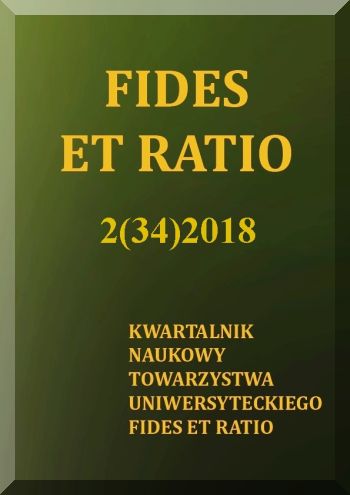Abstract
The limited dimensions of the raw material nodules have inspired the amber producers to master and improve the techniques of combining several or even a large number of matched elements to produce larger objects. Large fragile amber products, including intricate constructions and compositions, are a testimony to the development of science and technology, a valuable decoration of world museum collections and a balm for the soul of visitors. Large stocks of raw amber made it possible for Prussian King Fryderyk The Fist to commission an amber cabinet. The work was done in 1701–1713 by masters from Poland. Donated to Piotr The Great amber panels of Prussian King were supplemented by Italian artists – this is how the Amber Room was created. The lost chamber was reconstructed by a team of Russian amber artists in the years 1982–2003. Among the thousands of contemporary Polish amber artists stand out artists who masterly – assembly technique, stained-glass style or combined – construct impressive objects – they are created by: paintings, sculptures, furniture, altars. The largest of them is the Amber treasury of Lucjan Myrta and the Amber Altar of the Homeland, by Mariusz Drapikowski.
References
Choińska-Bochdan E. (2003), Bursztyn w kulturze [Amber in culture], (in:) Z bursztynem przez tysiąclecia [With amber for millennia], B. Kosmowska-Ceranowicz, E. Choińska-Bochdan (eds), (pp. 29–146), Gdańsk: Muzeum Archeologiczne.
Czaja M. (2007), Bursztynowy Wawel [Amber Wawel], Bursztynisko, 28, 23–24.
Drapikowski M. (2000), Powrót bursztynu do świątyń [Return of amber to the temples], Polski Jubiler, 2 (10), 30–32.
Drapikowski M. (2014), The concept of a triptych with amber element at the Church of the Holy Sepulchre, (in:) B. Kosmowska-Ceranowicz, W. Gierłowski (eds) Amber – Vievs, Opinions Vol. 2. Scientific seminars Amberif – International Fair of Amber, Jewellery and Gemstones, 2006–2009. Gdańsk: The International Amber Association, 126–128.
Fraquet, H. (1987), Amber, London: Butterworths.
Gierłowski W. (1999), Bursztyn i gdańscy bursztynnicy [Amber and Gdańsk amber craftsmen], Gdańsk: Marpress.
Gierłowski W. (2000), W Gdańsku powstaje monumentalne dzieło złotnictwa i bursztynu [A monumental work of goldsmithing and amber is being created in Gdańsk], Polski Jubiler, 3 (11), 24–25.
Gierłowski W. (2004), The exceptional role of Lucjan Myrta’s workshop in the amber handicraft of the 20th century; The works from Lucjan Myrta’s workshop, (in:) W. Gierłowski, J. Grążawska, B. Kosmowska-Ceranowicz, A. Pielińska, R. Szadziewski, Myrta Amber – the life and work of Lucjan Myrta, (pp. 8–22; 30–219), Bydgoszcz: Excalibur.
Gierłowski W. (2006), The collection of works from Lucjan Myrta’s workshop at the Historical Museum of the City of Gdańsk, (in:) B. Kosmowska-Ceranowicz, W. Gierłowski (eds) Amber – Vievs, Opinions [Vol. 1]. Scientific seminars Amberif – International Fair of Amber, Jewellery and Gemstones, 1994–2005. Gdańsk: The International Amber Association, 205–215.
Gierłowski W. (2008), Amber Treasure Chest, Baltic Jewellery News, 12, 12–15.
Grabowska J. (1982), L’Ambre polonais, Varsovie: Editions Interpress.
Grążawska J. (2014), Modern era artefacts in the collection of the Museum in Gdańsk, (in:) B. Kosmowska-Ceranowicz, W. Gierłowski (eds) Amber – Vievs, Opinions Vol. 2. Scientific seminars Amberif – International Fair of Amber, Jewellery and Gemstones, 2006–2009. Gdańsk: The International Amber Association, 129–136.
Grimaldi D., (1996), Amber: window to the past, New York: American Museum of Natural History.
Koperkiewicz A., Grążawska J., (eds), (2007), Muzeum Bursztynu Nowy Oddział – Muzeum Historycznego Miasta Gdańska. Otwarcie – Prezentacja [The Amber Museum New Branch – Historical Museum of the City of Gdansk. Opening – Presentation], Gdańsk: Muzeum Historyczne Miasta Gdańska.
Kosior M., (2018), The Polish Nation’s Amber Altar, Bursztynisko 41, 32.
Kosmowska-Ceranowicz B. (2004), Lumps of amber, (in:) Myrta Amber – the life and work of Lucjan Myrta, pp. 222–271. Bydgoszcz: Excalibur.
Kosmowska-Ceranowicz B., Kupryjanowicz J., Pielińska A. (2003), Bryły bursztynu – fenomen przyrody. Katalog. Amber nodules – a phenomenon of nature, Warszawa: Oficyna Wydawnicza Sadyba.
Kowalczyk P. (2004), The amber Totus Tuus, Bursztynisko, 24, 28–30.
Leciejewicz K. (2004), Barwy bursztynu. W: Targi Dóbr Ekskluzywnych. Prestige 2004. Katalog Targowy, 14–15.
Leciejewicz K. (2005), Bogactwo odmian bursztynu bałtyckiego, (w:) Odkrywane piękno bursztynu, 5–154.
Mierzwińska E. (1992), Bärnsten Guldet från Östersjön, Bydgoszcz: Excalibur.
Mierzwińska E. (2014), The Malbork Amber Collection, (in:) B. Kosmowska-Ceranowicz, W. Gierłowski (eds) Amber – Vievs, Opinions Vol. 2. Scientific seminars Amberif – International Fair of Amber, Jewellery and Gemnstones, 2006–2009. Gdańsk: The International Amber Association, 137–145.
Mierzwińska E., Żak M. (2001), Wielka księga bursztynu, Bydgoszcz: Excalibur.
Paterson V. (2016), Bursztyn z Wysp brytyjskich. W: Bursztyn. Poglądy, opinie, t. 3, Materiały z seminariów Amberif 2010–2015, 39–43.
Popiołek J. (2011), Bursztyn w dawnej Polsce. Antologia 1534–1900 [Amber in old Poland. Anthology 1534–1900], Gdańsk: Marpress.
Wielowiejski J. (1999), Die Bernsteinstrasse Adria–Ostsee in archäologischer und touristischer Sicht, (in:) Landscapes and Monuments along the Amber Road (International Symposium Sopron-Eisenstadt 15–18th October, Sopron, 1995, J. Gömöri (ed.), pp. 135–138, Sopron: Scarbantia Társaság.
Netography:
Biała I. (2016), Niesamowita bursztynowa twórczość Lucjana Myrty. Wystawa w ECS [The amazing amber work of Lucjan Myrta. Exhibition in ECS]
Causey F. (2018), Ancient carved ambers in the J. Paul Getty Museum, (in:) museumcatalogues.getty.edu/amber [last visited: 2018, June the 15th]
http://www.gdansk.pl/wiadomosci/Niesamowita-bursztynowa-tworczosc-Lucjana-Myrty-Wystawa-w-ECS,a,57313 [published 11.07.2016]
